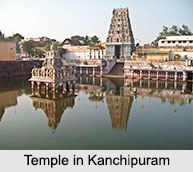 Ancient South Indian Cities were ruled by many rulers from the early era. Some of the empires that ruled the South Indian states which extended to Java, Sumatra, Indonesia, Srilanka and Kalinga from 1st BC to 12th Century are Hoysala Empire, Chalukya Dynasty, Ganga Dynasty, Kadamba Dynasty, Pallava Dynasty, Chola Dynasty, Pandya Dynasty and Chera Dynasty. South India was known as the lands of Chalukyas. The history traced back 5000 years ago with the untouched rivalry of the Delhi Sultanate and Mughal Dynasty in the medieval era.
Ancient South Indian Cities were ruled by many rulers from the early era. Some of the empires that ruled the South Indian states which extended to Java, Sumatra, Indonesia, Srilanka and Kalinga from 1st BC to 12th Century are Hoysala Empire, Chalukya Dynasty, Ganga Dynasty, Kadamba Dynasty, Pallava Dynasty, Chola Dynasty, Pandya Dynasty and Chera Dynasty. South India was known as the lands of Chalukyas. The history traced back 5000 years ago with the untouched rivalry of the Delhi Sultanate and Mughal Dynasty in the medieval era.
Amaravati
Amaravati is the newly developed city in Andhra Pradesh, but it has a long history of both political wars from the early era. The Buddhist culture flourished there from 400 BC to 1100 AD.
Hampi
Once it was the city of temples, Hampi is now a popular attraction among the history lovers for the presence of monuments of Vijaynagara kingdom.
Kanchipuram
Kanchipuram was the capital of Early Chola kings in the early era. The city is believed to have been a part of the mythical Dravida Kingdom of the Mahabharata. Now this city has the richest temple wonders.
Kodumanal
 Kodumanal was the birthplace of Sangam Literature. It was an ancient trade city in Tamil Nadu, popular in early era for the craftsmen of Chera Dynasty, who were specialized in making beads and high-quality iron.
Kodumanal was the birthplace of Sangam Literature. It was an ancient trade city in Tamil Nadu, popular in early era for the craftsmen of Chera Dynasty, who were specialized in making beads and high-quality iron.
Madurai
Madurai has been inhabited since at least the 3rd century BC. The trace of the flourished Madurai has been found in the scriptures of Megasthenese. Madurai was ruled by Kalabhra dynasty, Pandya Dynasty, Chola dynasty and the Vijaynagar Empire.
Vijayanagara
Now the city of rock temples, once it was the imperial city of Vijaynagara Empire, Vijaynagara was developed in 14th Century to 16th Century. Vijayanagara Empire was founded on the banks of the Tungabhadra River by Harihara I and Bukka Raya I in the 14th century.
Vanchi
Vanchi was the capital city of Chera Dynasty, who ruled the present day Kerala.
Thanjavur
Thanjavur came in the map from the Sangam Age. Later during the Chola rule, Thanjavur became the land of political dispute. Chola, Mutharayars and Kalabhra dynasty ruled this place.
Tiruchirappalli
The history of Tiruchirappalli began from 3rd Century BC. The most prominent historical monuments in Tiruchirappalli are the Rock fort, Sri Ranganatha Svami Temple at Srirangam and Jambukeswarar temple at Thiruvanaikaval. The ancient town of archaeological importance, Uraiyur, once the capital of the Early Cholas kings is now a suburb of Tiruchirappalli.
Pithapuram
Pithapuram is famous for the ancient Hindu temples. This land is known as the Dakshina Kashi among the Hindus. During Satavahana Dynasty era it was known as Pistapura.



















